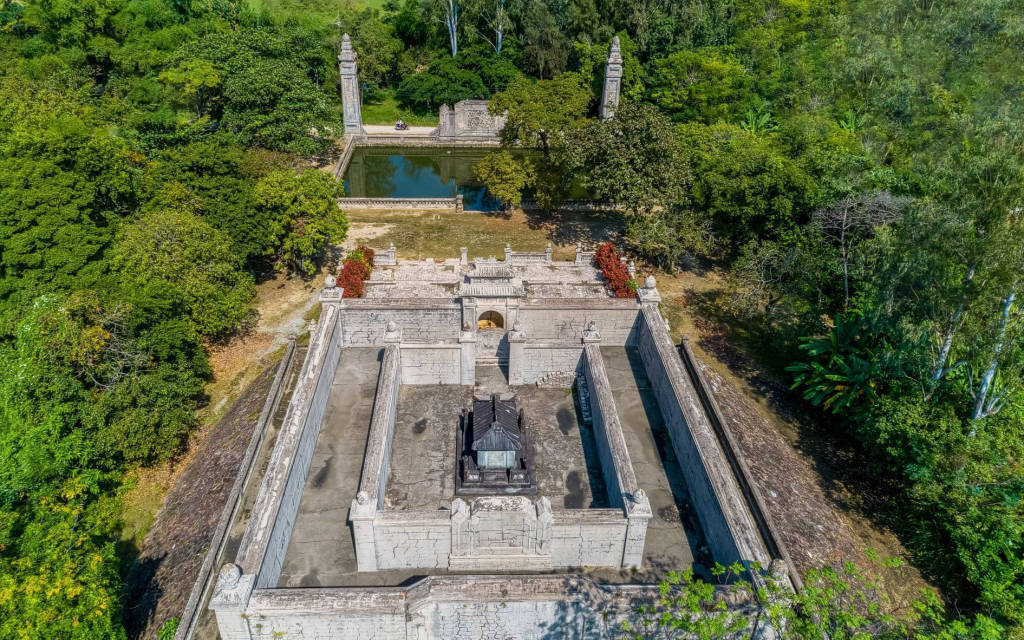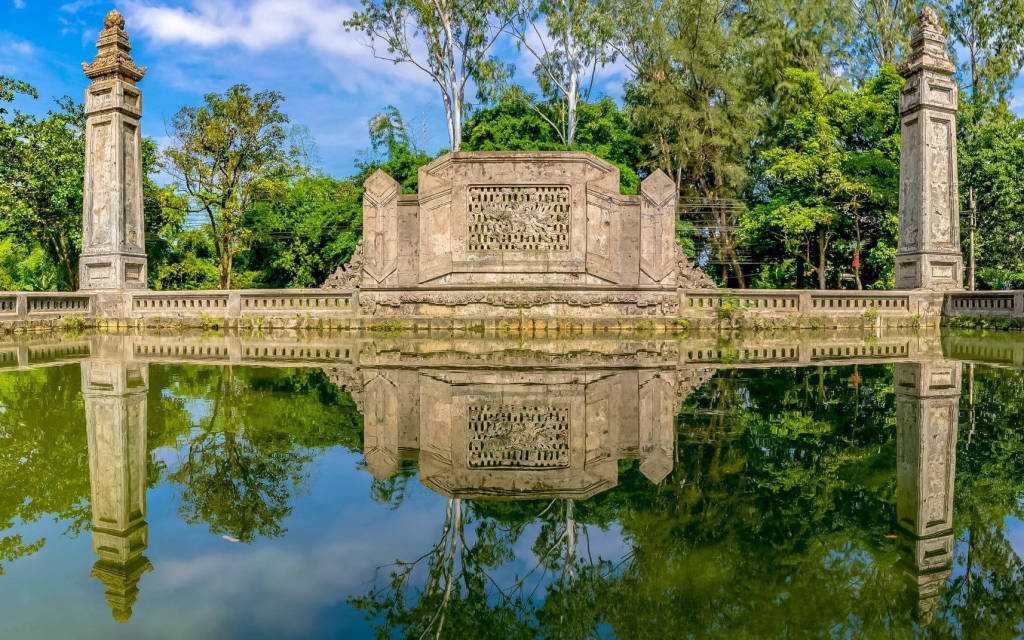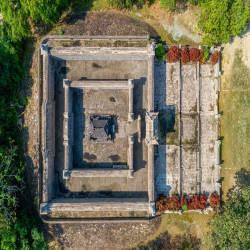Tien Cung Tomb (Tu Thong Lang) or also known as Van Van Tomb at 10 Tran Thanh Mai, An Dong Ward, Hue City, is the tomb of Queen Duong Thi Thuc, wife of King Dong Khanh, mother of King Khai Dinh. This is a unique architectural work, built according to traditional feng shui, with an area of 6 hectares. The tomb has been recognized as a national monument, an attractive tourist destination, rich in historical and cultural values.
Lang Tien Cung (Tu Thong Lang), also known as Lang Van Van, is the tomb of Queen Duong Thi Thuc (1868–1944), wife of King Dong Khanh, mother of King Khai Dinh and grandmother of King Bao Dai. This is one of the largest queen tombs in Hue, with unique architecture and cultural values, and was recognized as a national architectural and artistic relic in 2007.
1. History
Lang Van Van is located on Cu Bac land, An Cuu Tay village, Huong Thuy district, Thua Thien - Hue province (now No. 10 Tran Thanh Mai, An Dong ward, Hue city). The tomb is about 3 km southeast of Ky Dai. The tomb was built to honor Mrs. Duong Thi Thuc, Queen of the Nguyen Dynasty.
After 1945, due to lack of state management, Lang Van Van was neglected for many years. During the period 1953–1955, the Nguyen Phuc Clan Management Committee, under the leadership of Lady Tu Cung, organized the protection and care of the mausoleum. Although affected in the Mau Than Spring Offensive of 1968, the mausoleum was promptly repaired. However, the mausoleum did not receive proper attention until 2002, when the Hue Monuments Conservation Center began to manage and protect this relic.
2. Architecture
Van Van Mausoleum was built according to the traditional feng shui principles of the Nguyen Dynasty, with a majestic scale and sophisticated architectural art. Compared to other mausoleums of the Nguyen Dynasty queens, Van Van Mausoleum has a large area and was elaborately built, being one of the typical works of this dynasty.
The mausoleum's construction area is about 6 hectares, surrounded by forbidden pillars, forming a separate, sacred area. The mausoleum has all the feng shui elements such as the front door (screen), the back door (Ngu Binh mountain), the bright hall (lake), and the system of Thanh Long on the left and Bach Ho on the right, symbolizing the harmony between natural elements.
In front of the mausoleum is a large scroll screen, two massive pillars, along with a sophisticated garden system. After passing Luc Thuy lake (green water all year round), visitors must go through 3 floors of yard to reach the main area of the mausoleum, called Buu Thanh. This is where the Huyen Cung is located, where the body of Queen Duong Thi Thuc is laid to rest.
Huyen Cung is rectangular in shape, about 400m² wide, surrounded by two layers of walls 4.5m and 3m high, creating a closed space.
The main door of the mausoleum is called Buu Thanh Mon, decorated with the image of a phoenix, a symbol of women. The queen's tomb was built of stone and concrete, shaped like a small house with a stone roof and very sophisticated relief patterns, depicting the image of a phoenix flying in the clouds.
3. Artistic value
Van Van Tomb is a unique work of art, demonstrating the combination of traditional architecture and feng shui of the Nguyen Dynasty. The appearance of the tomb includes typical decorative elements such as willow horses, pine trees, and plum birds, reflecting the influence of East Asian cultures. Construction materials such as bricks, stones, iron, and reinforced concrete have been used appropriately, creating a work that is both durable and has strong aesthetic value.
4. Conclusion
Van Van Tomb is not only a place to mark the respect for Queen Duong Thi Thuc, but also an important historical relic of the Nguyen Dynasty. The architecture of the tomb demonstrates the talent of the artisans of that period, while reflecting the profound cultural and religious values of the Vietnamese people. This relic is not only an attractive tourist destination, but also a valuable source of documents for research on Nguyen Dynasty architecture and culture.
 Register
RegisterSign in Travel Agent
Sign in Supplier
Sign in Affiliate
Sign in Guru







 Số 10 Trần Thanh Mại, P. An Đông, Tp. Huế, T. Thừa Thiên Huế, Việt Nam
Số 10 Trần Thanh Mại, P. An Đông, Tp. Huế, T. Thừa Thiên Huế, Việt Nam